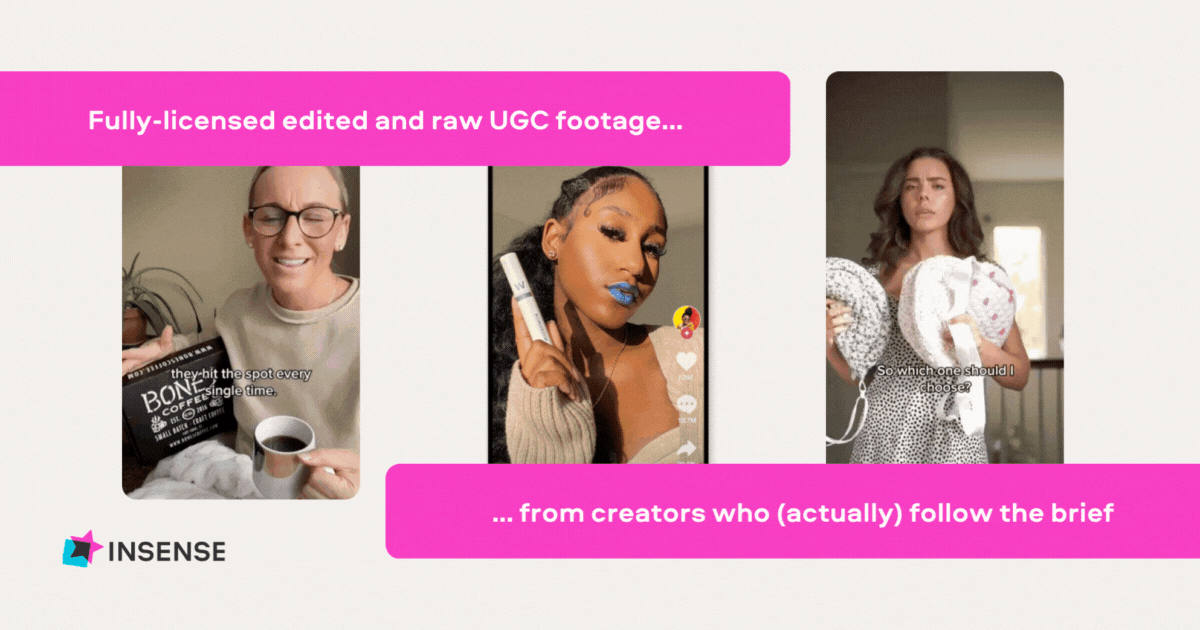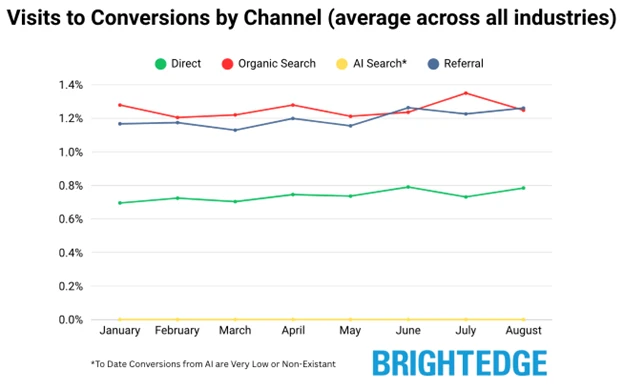Beat Fatigue with Scarcity
🔄 Retire, revive, and reframe products for frenzy, AI Search Growth vs. Google’s Ongoing Dominance, and more!

Hey there Smarty 👋
Are you geared up to catch the latest and greatest in quick shorts?
And just a quick heads-up! If you stumbled upon us through a friend, make sure to subscribe here! That way, you’ll never miss out on the trending shorts.

🔄 Beat Fatigue with Scarcity
DTC brands don’t suffer from too few launches. They suffer from too many launches that blur into each other and decay fast. The problem isn’t product fatigue, it’s anticipation collapse.
This play flips seasonal fatigue into cyclical scarcity. You don’t need a new SKU. You need to reframe its return.
🎯 The Core Play: Forced Inactivity → Manufactured Frenzy
- The Setup: Pull a SKU that’s plateaued. Let it vanish for 30–90 days. No fake “sold out.” Be clear: “Temporarily retired.”
- The Return: Reintroduce the exact SKU, but pair it with a new access mechanic: email unlocks, SMS-only drops, micro-influencer waitlists, and early VIP gates.
- The Result: The re-entry performs like a launch, even when the product hasn’t changed, because the calendar did.
This isn’t fake urgency. It’s engineered anticipation.
🌀 Why This Works Now: August–October is the BFCM Loading Zone
Between now and Black Friday, most brands either fire too early or wait too long. But BFCM warm-up isn’t just about discount timing, it’s about attention formatting. A reintroduced SKU in September sets up:
- Creative refreshes without R&D
- Pre-BFCM segmentation (buyers vs. watchers)
- Scarcity energy you can drag into Q4
Every launch like this becomes a reset point for conversion psychology.
🔁 Conversion Event Stacking: Turn Scarcity Into List Growth
The real compounding happens when each SKU comeback is built as a growth loop:
- Email-only waitlists capture re-interest before the re-drop.
- Influencer flywheels leak access, creating social proof ahead of relaunch.
- Tiered unlocks (e.g., SMS gets it 48 hrs earlier) drive channel opt-ins.
Suddenly, your dusty SKU isn’t just a product. It’s a list-building campaign.
📦 Real-World Fix: Scarcity Without Sloppiness
Execution breaks down post-checkout. You hype scarcity, and then ship a generic brown box 8 days late.
📉 That kills the experience loop.
Shipfusion analyzed 110 Cosmetic brands and found that 75% missed higher AOV with no post-purchase offers, and 33% had damaged items or zero interior branding.
Download the DTC Delivery Files and audit your post-drop experience before your next SKU revival. If you ship to customers, these insights are for you.
This reframes old product decay into calendar-driven anticipation. It plugs into BFCM timing, stacks audience growth, and syncs seamlessly with your existing creative workflows. This is how smart brands launch without launching, and make every comeback count.

Together with Insense
Ship. Brief. Launch. UGC That Goes Live in 48 Hours.

The right UGC cuts acquisition costs in half and 4× your ad CTRs, but only if the creators follow the playbook.
Trying to manage that manually? Burnout guaranteed.
Insense gives you instant access to a global pool of 68,500+ micro-influencers and UGC specialists, pre-vetted, pre-briefed, and performance-proven across 35+ countries.
Top brands use Insense to run seamless campaigns from product seeding and gifting to TikTok Shop and affiliate campaigns, and whitelisted ads.
- Nurture Life cut turnaround time from 2 months to 2 weeks using just one marketer and Insense
- Solawave received 180+ ad-ready assets in a single month by simply shipping products
- Matys Health achieved 12× reach through Spark Ads on TikTok
Want to skip sourcing chaos and launch faster?
Book your free strategy call before Sept 19th and get a $200 bonus for your first campaign!

🔎 AI Search Growth vs. Google’s Ongoing Dominance
AI search is expanding rapidly, but new data shows it’s still a tiny slice of the traffic pie while traditional organic search remains the heavyweight for referrals and conversions.

The Breakdown:
1. AI Search Traffic Remains Minimal - BrightEdge found that AI-driven search referrals accounted for less than 1% of total traffic from January to August, even with some platforms seeing triple-digit monthly growth. This means AI search currently drives little measurable sales or conversions despite all the hype.
2. Organic Search Still Powers Conversions - Organic search continues to be the primary driver of both traffic and conversions across industries, proving that it remains the most dependable channel for sustainable growth and customer acquisition.
3. ChatGPT Users Still Lean on Google - Similarweb data shows 95.3% of ChatGPT users also visit Google, while only 14.3% of Google users visit ChatGPT. Even as ChatGPT logged 5.8B visits vs. Google’s 83.8B, Google remains the first stop for nearly everyone searching online.
4. AI Search Growth Has Limit - Despite explosive interest, ChatGPT referral traffic is inconsistent and still dwarfed by Google. Search Engine Land, for example, reported 37x more referral traffic from Google than ChatGPT, highlighting AI tools as more of a research supplement than a replacement.
The data shows that conversions and consistent digital growth remain firmly tied to tried-and-true SEO, while AI search is best treated as a complement rather than a replacement. The smartest strategy is to adapt to AI’s rise while doubling down on the organic tactics that have always delivered measurable results.

🚀Quick Hits
📦 Millions of holiday shoppers rely on publisher-curated guides and reviews, but access is limited to a small handful of marketplace brands. Levanta is working directly with those publishers to surface brands that convert at 5:1 compared to DTC. See if your brand qualifies before the cut is made.
📸 Instagram is rolling out Shots, a no-edit, disappearing image-sharing feature that mixes BeReal-style spontaneity with Snapchat’s one-view format. Users can quickly snap and send photos to mutual followers for real-time interaction before they vanish.
📚 Encyclopedia Britannica filed a lawsuit accusing Perplexity of copying its verified content and trademarks without consent, alleging verbatim use of its articles in Perplexity’s “answer engine,” threatening Britannica’s 200 million-session monthly audience.
📊 Only 14% of U.S. consumers trust companies with personal data, while 76% rank social media as least trustworthy, citing unclear privacy policies and invasive data requests.
🎁 Tinuiti’s survey shows 65% of U.S. shoppers will start gift buying before Thanksgiving, with 41% planning to do most shopping online. Price, free shipping, and discounts remain the top motivators.

That’s a wrap for today! Tell us your thoughts about today's content as we line up more Shorts! And don’t hesitate to share this with someone who’d adore it. 🥰
